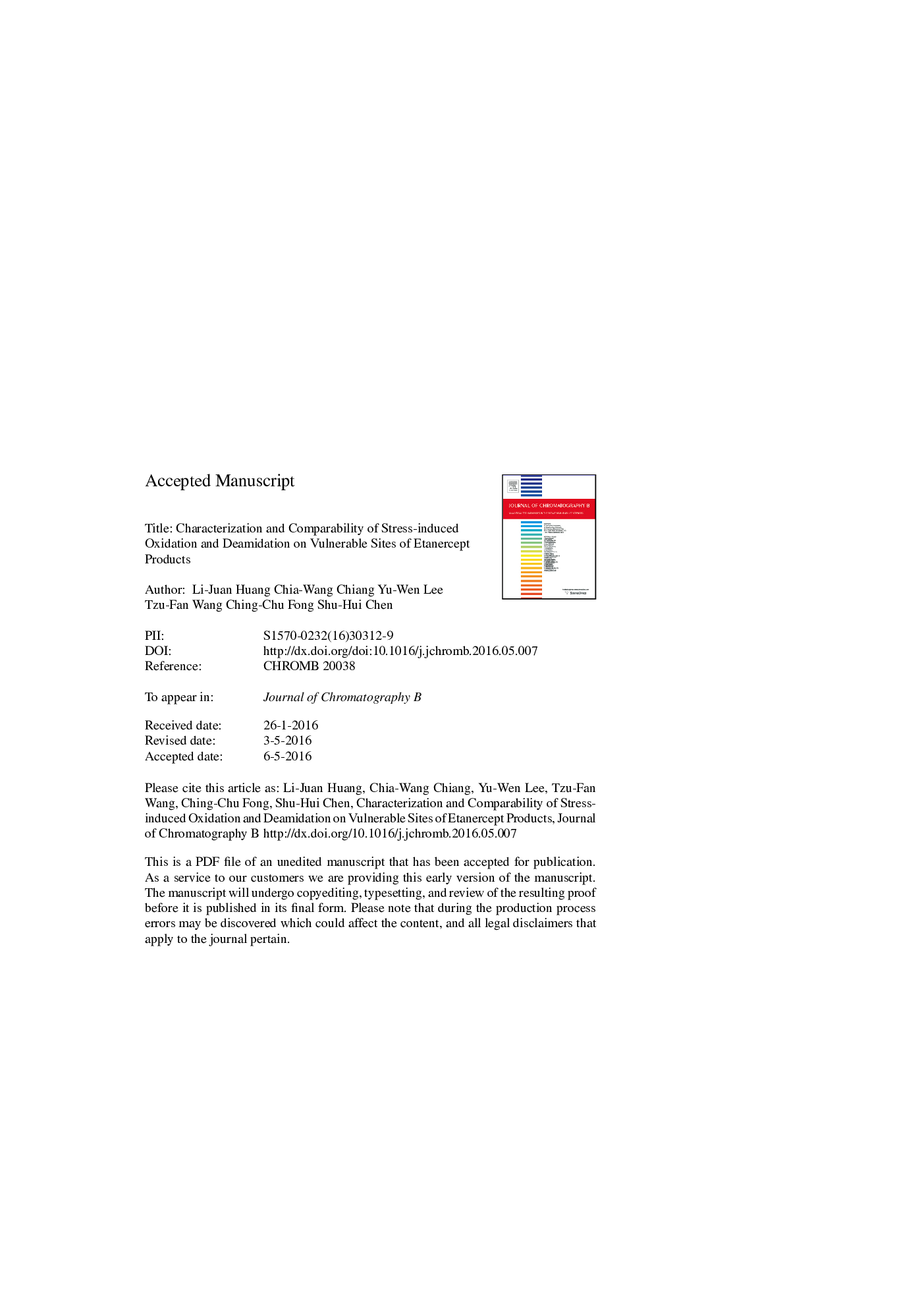| Article ID | Journal | Published Year | Pages | File Type |
|---|---|---|---|---|
| 5136740 | Journal of Chromatography B | 2016 | 18 Pages |
Abstract
An etanercept biosimilar, TuNEX®, was compared to the innovator drug, Enbrel®, for its reaction to stress-induced oxidation and deamidation, which may affect drug efficacy. A tryptic peptide map of both etanercept products was generated by liquid chromatography (LC) using mass spectrometry (MS) and ultraviolet (UV) spectrophotometry detection methods. The sequence of each modified or non-modified peptide peak was assigned based on accurate measurement of the mass of the protein and analysis utilizing tandem MS. Similar profiles of intrinsic oxidation on methionine (M) and deamidation on asparagine (N) were obtained for the two products, regardless of a two-amino acid (AA) residue variance in the heavy chain (Fc) between them. The level of oxidative stress exerted by tert-butyl hydroperoxide (tBHP), and alkaline stress exerted by a pH 10.4 solution, was examined using an LC-UV method. The results indicated that TuNEX® demonstrated a similar stress-induced modification profile compared to that of Enbrel®. For both products, oxidative stress increased the oxidation from an intrinsically low (0-6.9%) to moderate or high (42-100%) level for almost all M residues (M30, M174, M187, M223, M272, and M448); alkaline stress increased the deamidation level of N404 from a low (0.0 or 1.7%) to moderate (19-26%) level. Based the results of a cell-based bioactivity assay, TuNEX® also exhibited a similar level of bioactivity as Enbrel® in unstressed, oxidative-stressed, or alkaline-stressed conditions. The bioactivity of both products remained unaltered by oxidative stress but was reduced by alkali stress. In conclusion, our data indicated that TuNEX® exhibits a similar chemical stress profile as that of Enbrel® in terms of oxidation and deamidation as well as bioactivity.
Keywords
Related Topics
Physical Sciences and Engineering
Chemistry
Analytical Chemistry
Authors
Li-Juan Huang, Chia-Wang Chiang, Yu-Wen Lee, Tzu-Fan Wang, Ching-Chu Fong, Shu-Hui Chen,
